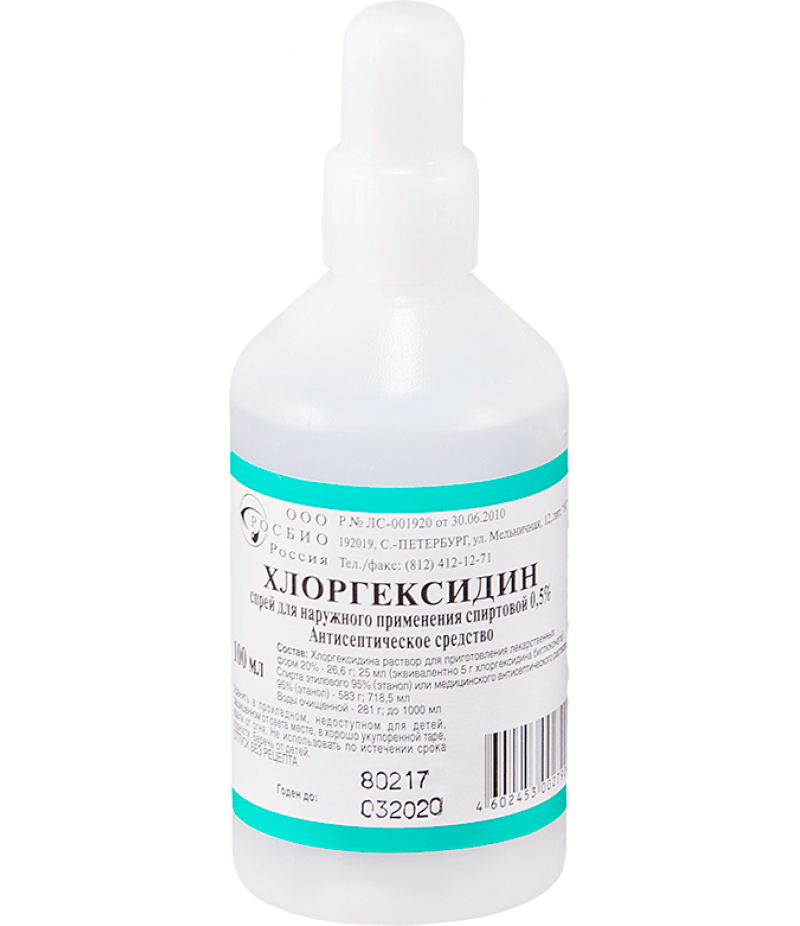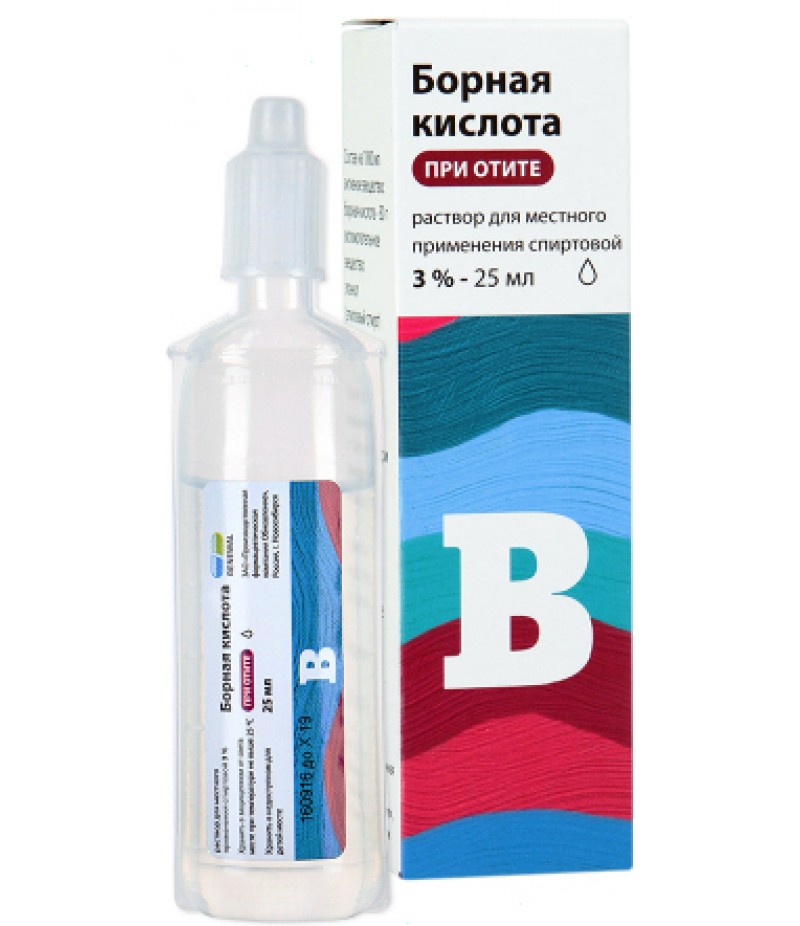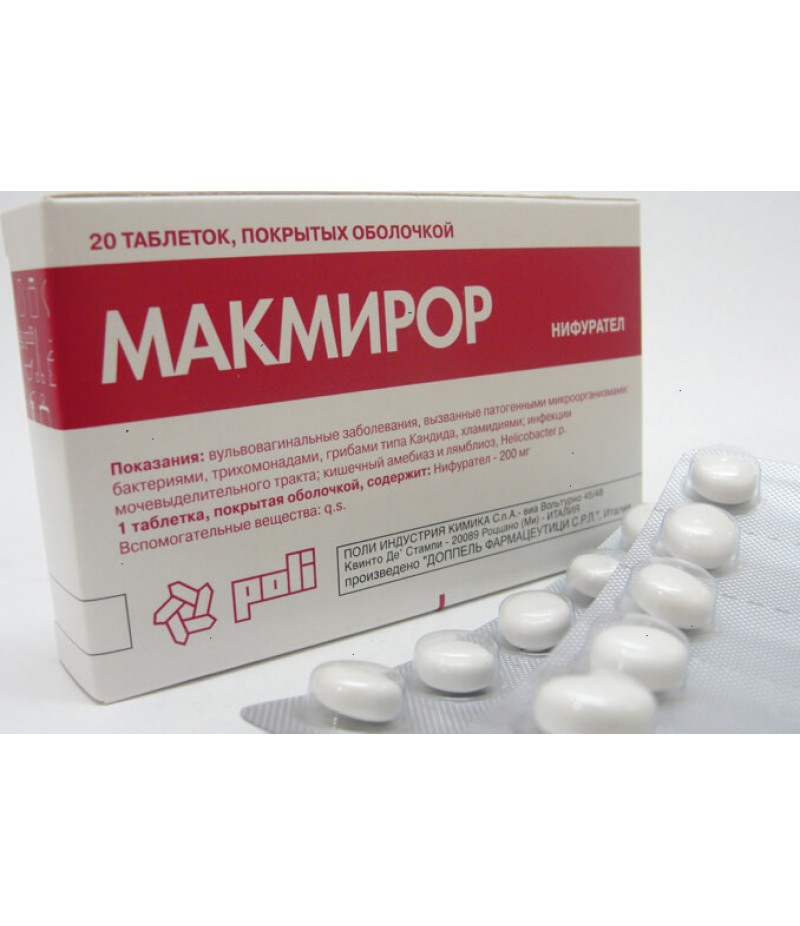Chlorhexidine Bigluconate 0.05% 100ml
- $19.69
- 3 or more $19.56
- 5 or more $19.49
- Availability:In Stock
Chlorhexidine Bigluconate instructionYou can buy Chlorhexidine on this pageComposition of ChlorhexidineThe formulation of 0.05% solution of Chlorhexidine Bigluconate contains 0.5 mg of chlorhexidine bigluconate, additional substan..
Tags: solution
Chlorhexidine Bigluconate instruction
You can buy Chlorhexidine on this page
Composition of Chlorhexidine
The formulation of 0.05% solution of Chlorhexidine Bigluconate contains 0.5 mg of chlorhexidine bigluconate, additional substances.
The composition of the drug 20% solution of Chlorhexidine Bigluconate includes 0.2 g of active substance, additional substances.
Form of issue
INN: Chlorhexidine
The form of the issue is as follows. The drug is available in the form of a solution of 0.05% for external application. In a vial of polymer with a nozzle, as well as in glass bottles of 100 ml, 1 bottle in a cardboard package.
The drug solution of 20% is sold in polymer bottles with a cap, 100ml, 500ml.
Candles, a gel (including lidocaine), a cream, an ointment, a spray with a similar active substance are also produced.
pharmachologic effect
The aqueous solution of Chlorhexidine Bigluconate has a local antiseptic effect, mainly bactericidal. The agent is a dichloro-containing biguanide derivative. Affects the body, changing the properties of the cell membrane of microorganisms. Cations that are formed due to the dissociation of chlorhexidine salts react with the shells of bacteria that have a negative charge. The effect of the drug contributes to the destruction of the cytoplasmic membrane of the bacterium. Her balance is broken, and the bacterium eventually dies.
Chlorhexidine Bigluconate solution 0.05%, gluconate 20% effectively destroys a variety of strains of microorganisms. These are Neisseria gonorrhoeae, Trichomonas vaginalis, Bacteroides fragilis, Chlamidia spp., Gardnerella vaginalis, Treponema pallidum. Also, the drug is active against Ureaplasma spp., And also has a moderate active effect on individual strains of Proteus spp. and Pseudomonas spp.
The virus shows resistance to the drug (exception is the herpes virus), fungal spores.
If the rinse aid with Chlorhexidinum is used for washing hands or the skin is treated with the drug, Chlorhexidine Bigluconate has a prolonged antibacterial effect. Therefore, the drug can be used to treat the hands of the surgeon and the operating field.
The drug retains antimicrobial activity in the presence of pus, blood, etc., but there is a decrease in its effectiveness.
Pharmacodynamics and pharmacokinetics
With topical application of Chlorhexidine, the agent is not absorbed into the bloodstream and has no systemic effect.
Indications for use
For what the antiseptic is applied, it is possible to learn from the detailed annotation to the preparation. It is widely used to treat diseases that provoke microorganisms that are sensitive to the effects of chlorhexidine, and for their prevention.
The drug is used to treat certain diseases depending on the concentration of the solution.
A solution of 0.05%, 0.1%, and 0.2% is widely used to prevent infectious diseases after surgical interventions. Practice is the use in dentistry of such solutions, in order to process dentures. How to apply in dentistry Chlorhexidine, determine the dentists in the process of various manipulations, and also use it for stomatitis, periodontitis for rinsing gums.
Practice skin treatment in urology (if necessary penetration into the urethra, etc.), surgery, gynecology before and after surgery to prevent infection. The use in gynecology of the drug is practiced with the purpose of disinfecting the mucous membranes and skin before carrying out a number of manipulations. How to apply the solution depends on the type of procedure or manipulation.
In gynecology, Chlorhexidine is also used for thrush. To get rid of thrush, a woman is shown syringing according to a special scheme.
Chlorhexidine is used in the treatment of many dermatological diseases, having both bacterial and fungal origin. It also shows the use of the drug in the presence of purulent wounds, diseases of the mucous membranes, provoked by microorganisms sensitive to the active substance of the drug.
What is Chlorhexidine is known to those who were seriously injured. The agent is often used to treat wounds and skin lesions to prevent infection. What is it, and whether to use the remedy in a particular case, determines the doctor.
Chlorhexidine Bigluconate solution is used to prevent diseases that are transmitted sexually - genital herpes, chlamydia, trichomoniasis, syphilis, gonorrhea.
Chlorhexidine Bigluconate solution 0.5% is used to treat mucosal and skin damage, as well as for the treatment of medical instruments (solution temperature should be 70 degrees Celsius).
Chlorhexidine Bigluconate solution 1% is used to prevent infection of burns, wounds, for disinfection before operations, as well as for processing tools and appliances that can not be heat treated.
A solution of Chlorhexidine Bigluconate 5% and 20% is used in the preparation of solutions based on water, glycerin or alcohol.
Chlorhexidine Bigluconate solution 0.05%, gluconate 20% effectively destroys a variety of strains of microorganisms. These are Neisseria gonorrhoeae, Trichomonas vaginalis, Bacteroides fragilis, Chlamidia spp., Gardnerella vaginalis, Treponema pallidum. Also, the drug is active against Ureaplasma spp., And also has a moderate active effect on individual strains of Proteus spp. and Pseudomonas spp.
The virus shows resistance to the drug (exception is the herpes virus), fungal spores.
If the rinse aid with Chlorhexidinum is used for washing hands or the skin is treated with the drug, Chlorhexidine Bigluconate has a prolonged antibacterial effect. Therefore, the drug can be used to treat the hands of the surgeon and the operating field.
The drug retains antimicrobial activity in the presence of pus, blood, etc., but there is a decrease in its effectiveness.
Pharmacodynamics and pharmacokinetics
With topical application of Chlorhexidine, the agent is not absorbed into the bloodstream and has no systemic effect.
Indications for use
For what the antiseptic is applied, it is possible to learn from the detailed annotation to the preparation. It is widely used to treat diseases that provoke microorganisms that are sensitive to the effects of chlorhexidine, and for their prevention.
The drug is used to treat certain diseases depending on the concentration of the solution.
A solution of 0.05%, 0.1%, and 0.2% is widely used to prevent infectious diseases after surgical interventions. Practice is the use in dentistry of such solutions, in order to process dentures. How to apply in dentistry Chlorhexidine, determine the dentists in the process of various manipulations, and also use it for stomatitis, periodontitis for rinsing gums.
Practice skin treatment in urology (if necessary penetration into the urethra, etc.), surgery, gynecology before and after surgery to prevent infection. The use in gynecology of the drug is practiced with the purpose of disinfecting the mucous membranes and skin before carrying out a number of manipulations. How to apply the solution depends on the type of procedure or manipulation.
In gynecology, Chlorhexidine is also used for thrush. To get rid of thrush, a woman is shown syringing according to a special scheme.
Chlorhexidine is used in the treatment of many dermatological diseases, having both bacterial and fungal origin. It also shows the use of the drug in the presence of purulent wounds, diseases of the mucous membranes, provoked by microorganisms sensitive to the active substance of the drug.
What is Chlorhexidine is known to those who were seriously injured. The agent is often used to treat wounds and skin lesions to prevent infection. What is it, and whether to use the remedy in a particular case, determines the doctor.
Chlorhexidine Bigluconate solution is used to prevent diseases that are transmitted sexually - genital herpes, chlamydia, trichomoniasis, syphilis, gonorrhea.
Chlorhexidine Bigluconate solution 0.5% is used to treat mucosal and skin damage, as well as for the treatment of medical instruments (solution temperature should be 70 degrees Celsius).
Chlorhexidine Bigluconate solution 1% is used to prevent infection of burns, wounds, for disinfection before operations, as well as for processing tools and appliances that can not be heat treated.
A solution of Chlorhexidine Bigluconate 5% and 20% is used in the preparation of solutions based on water, glycerin or alcohol.
It should be noted that if rinsing of the mouth with Chlorhexidine causes a burning sensation, then, most likely, the solution has too high a concentration. The maximum allowable concentration is not more than 0.5%. Preliminary instructions should be studied, how to dilute the mouthwash drug. Rinsing of the mouth after removal of the teeth is carried out three times a day for 1 minute. Whether it is possible to rinse the mouth more often and how to rinse the mouth, if complications are noted after tooth extraction, it is necessary to check with a specialist.
Chlorhexidine solution during the rinse can not be swallowed, with an occasional hit of the solution in the stomach you need to drink tablets of activated charcoal (1 tablet per 10 kg of human weight).
Rinse the nose with maxillary sinusitis with this drug should not be practiced alone. Whether it is possible to wash out a nose, exclusively the doctor defines. A solution taken in the nose can get into the cavity of the inner ear or the shell of the brain, which is fraught with the development of serious complications.
Overdose
According to the instructions, an overdose of the drug is impossible. When swallowed, the preparation shows the gastric lavage, the use of activated charcoal, symptomatic treatment.
Interaction
If the pH of the medium is greater than 8, a precipitate forms. If hard water is used in the preparation of the solution, its bactericidal effect decreases.
It does not combine with anionic compounds, in particular with soap.
It does not combine with chlorides, carbonates, phosphates, sulfates, borates, citrates.
Under the influence of the agent, the sensitivity of microorganisms to the influence of neomycin, kanamycin, chloramphenicol, cephalosporin increases.
Ethyl alcohol enhances the bactericidal effect.
Terms of sale
It is sold in pharmacies without a doctor's prescription.
Storage conditions
The drug should be stored in a dark dry place, the temperature of storage - from 1 to 25 degrees Celsius.
Shelf life
A solution of 0.05% can be stored for 2 years.
A 20% solution can be stored for 3 years.
The prepared solutions can be stored for 1 week.
special instructions
The solution remains active in the presence of impurities of blood and organic substances. It is necessary to prevent contact with the eyes, the membranes of the brain and the auditory nerve.
In people with open TBI, damaged by the spinal cord, perforation of the tympanic membrane, it is necessary to avoid getting the drug on the surface of the brain, the meninges, and also into the tympanum.
In case of contact with eyes, rinse immediately.
It is not recommended to mix with other detergents and disinfectants.
If clothing was in contact with the product, do not use it with hypochlorites that produce active chlorine.
Analogues
Analogues of Chlorhexidine Bigluconate are preparations that contain a similar active substance. Analogues are issued in the form of different dosage forms - gels, solutions, ointments, suppositories. This is Hexicon and others.
Other antiseptic agents may also be used, such as iodine or hydrogen peroxide.
Which is better: Chlorhexidine or Miramistin?
Many people are convinced that Miramistin and Chlorhexidine are the same. In fact, these drugs really belong to the same class of antiseptic drugs. What is the difference between Chlorhexidine and Miramistin is in the active substances contained in the preparations. Miramistin is not a complete analog of Chlorhexidine. It has a pronounced antifungal and antiviral effect. Therefore, there are some differences in the indications for the use of this drug. Miramistin is not contraindicated in people with dermatitis.
Children
For the treatment of children, the drug is used with caution and only after the appointment of a doctor.
In pregnancy and lactation
Chlorhexidine during pregnancy and during breastfeeding can be applied topically. However, despite the fact that pregnancy is not a contraindication to the use of the drug, prolonged use of the solution is not recommended.
Gargling during pregnancy is only possible under the supervision of a doctor.
Reviews of Chlorhexidine
Reviews for Chlorhexidine Bigluconate are mostly positive. Specialists and patients note a pronounced antiseptic effect when using the solution. Positive results when using the solution are noted when rinsing the throat, in dentistry, in gynecology. Side effects in patients are very rare. Positive effect is noted and when used against acne, the reviews in this case are also good.
Chlorhexidine for the face is used as a solution of 0.01%, it has an antimicrobial effect when it penetrates the skin. However, in the reviews it is noted that it is better to ask a dermatologist if it is possible to wipe a person with such a solution, since an individual reaction to the drug is possible.
If you believe the reviews, Chlorhexidine from acne cures effectively, if you apply it correctly. The agent needs to wipe the area around the formations on the face. Many people say that you can quickly get rid of acne by applying it in combination with other drugs.
Shampoo with 4% chlorhexidine solution is successfully used to prevent skin infections in domestic animals. According to reviews, this shampoo for dogs and cats cleans the skin well and makes silky hair.






